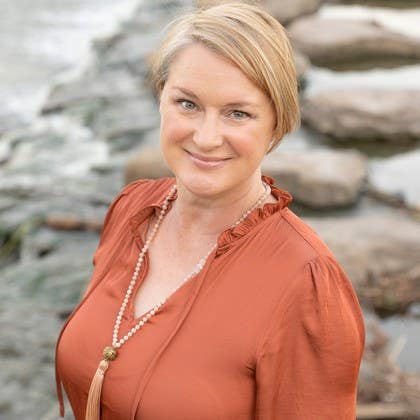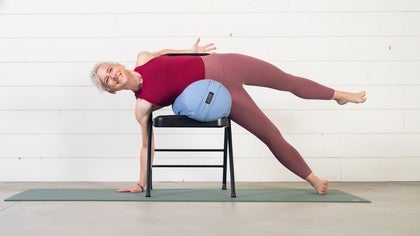
What Are Your Dreams Trying to Tell You?
Have you ever had a dream so compelling that upon waking, you thought, "That dream must mean something!" Dreams, and the meaning we attribute to them, have the power to shape our experience of waking life. In fact, they have done so since the beginning of time.
Recently, I was recounting an odd dream I had to a friend who is studying Jungian dream analysis. The dream involved my husband and I hosting a dinner party in our California beach home. The dream opened with light hearted laughter and cooking in the kitchen with close friends.
Next, a herd of tourists began walking through our living room to get to the beach! I abruptly informed them that they were in our private residence and should leave. Back in the kitchen, all of a sudden an iridescent green and purple dragonfly flies toward me and begins to burrow into my third eye. I was frantically attempting to pull it's little wings out of my head, when a soft spoken friend (picture Alana) placed her hand on my wrist and calmly said, "It’s okay, Angel. Leave it. This is supposed to happen." Stunned, I woke up and touched my forehead.
After describing the dream to my friend, her insight opened my mind to consider the hidden meaning of the images and connect how the dream could relate to my current life journey. This further motivated me to dig a little deeper into the latest dream science and see what I could uncover about this mysterious journey we take when we drift off to dreamy sleep.
A bit of history
Dreams have fascinated humans throughout history. During ancient times, dreams were believed to be communications from the gods or from the dead, with the power to predict the future, warn of impending danger, and advise rulers. Dream interpretation was an art mostly performed by prophets, diviners, and seers who were highly sought after for their gifts in decoding and divining the messages of dreams.
In the early 1900s, Sigmund Freud, the father of psychoanalysis, theorized that people are motivated by unconscious desires and repressed memories (usually of a sexual nature) that often play out in dreams because we’re too embarrassed to reveal them in our waking life. His non-scientific theory of dream interpretation greatly influenced the field of psychiatry and psychology for a century. While modern scientists have debunked Freud’s dream theory, his contribution in expanding our collective curiosity into dream research is valuable.
Swiss Psychologist Carl Jung worked closely with Sigmund Freud for a few years before differing viewpoints sent them their separate ways. Like Freud, Jung viewed dreams as messages from the unconscious, but did not see them all as repressed sexual desires. Jung rejected the idea of a "dream dictionary" and believed dreams held images, metaphors, and symbols that could be analyzed within the context of an individual's internal and external life.
Today, sleep experts Robert Stickgold, PhD, professor of Psychiatry at Harvard Medical School and Matthew Walker, PhD, professor of neuroscience and psychology at UC Berkeley, are among those leading sleep research to understand what happens in the brain and body when we dream.
Types & stages of sleep
There are two types of sleep: NREM (non-rapid eye movement) sleep and REM (rapid eye movement) sleep. Non REM sleep is subdivided into four stages: awake/light sleep, light sleep, and deep sleep. During light NREM sleep, the body temperature lowers, and the heart rate and brainwave activity begin to slow. In deeper NREM sleep, Dr. Walker explains how something magical begins to happen: “All of a sudden the brain erupts with these huge, powerful brain waves. The body is actually recharged in terms of its immune system. We also get this beautiful overhaul of our cardiovascular system. And, in fact, upstairs in the brain, deep non-REM sleep will help consolidate memories and fixate them into the neural architecture of the brain.”
Once we move into REM sleep, not only does the brainwave activity speed up, but also the left and right sides of the prefrontal cortex, where reason and ordered logical thought reside, go relatively offline. The visual, motor, emotional, and autobiographical memory regions of the brain start to light up, and our brains begin making connections that wouldn't be available during our waking state (thus boosting our creativity when we're awake!). It's during REM sleep that we have our most hallucinogenic, motoric, and bizarre dreams.
REM sleep dreams as nighttime therapy
Though we dream in all stages of sleep, Walker says it is in REM sleep dreaming that we get a form of overnight therapy. This is because in REM sleep, the anxiety triggering molecule norepinephrine is absent from the brain, allowing the brain to process challenging emotions without promoting anxiety. As Walker explains it, "REM-sleep dreaming takes the painful sting out of difficult, even traumatic, emotional episodes you have experienced during the day, offering emotional resolution when you awaken in the morning."
Yoga & dreaming
Whether we are dreaming or being dreamed, the journey our brain and body takes each night is a blessing! REM sleep dreaming helps us process emotions, solve problems, and activate latent creative potential. Journaling our dreams can give us a fresh perspective and the ability to see patterns and symbols that continue to appear, perhaps guiding our soul's evolution. If we lean into the science of REM sleep dreaming as therapy, it only makes sense to do all we can to support our body and brain to prioritize a good 8-hour night's sleep.
The Good Night Yoga show is a lovely place to start connecting the two as it promotes practices that help to support restful sleep. Here are a few more suggested practices to weave dreaming and yoga into a mutually advantageous alliance.
3 Pillars: Yoga for Sleep with Melina Meza
Brain Balancer with Kara Looney
Meditation is Your Homework with Erich Schiffmann
Sweet dreams!
Comments
No comments yet. Be the first!








You need to be a subscriber to post a comment.
Please Log In or Create an Account to start your free trial.